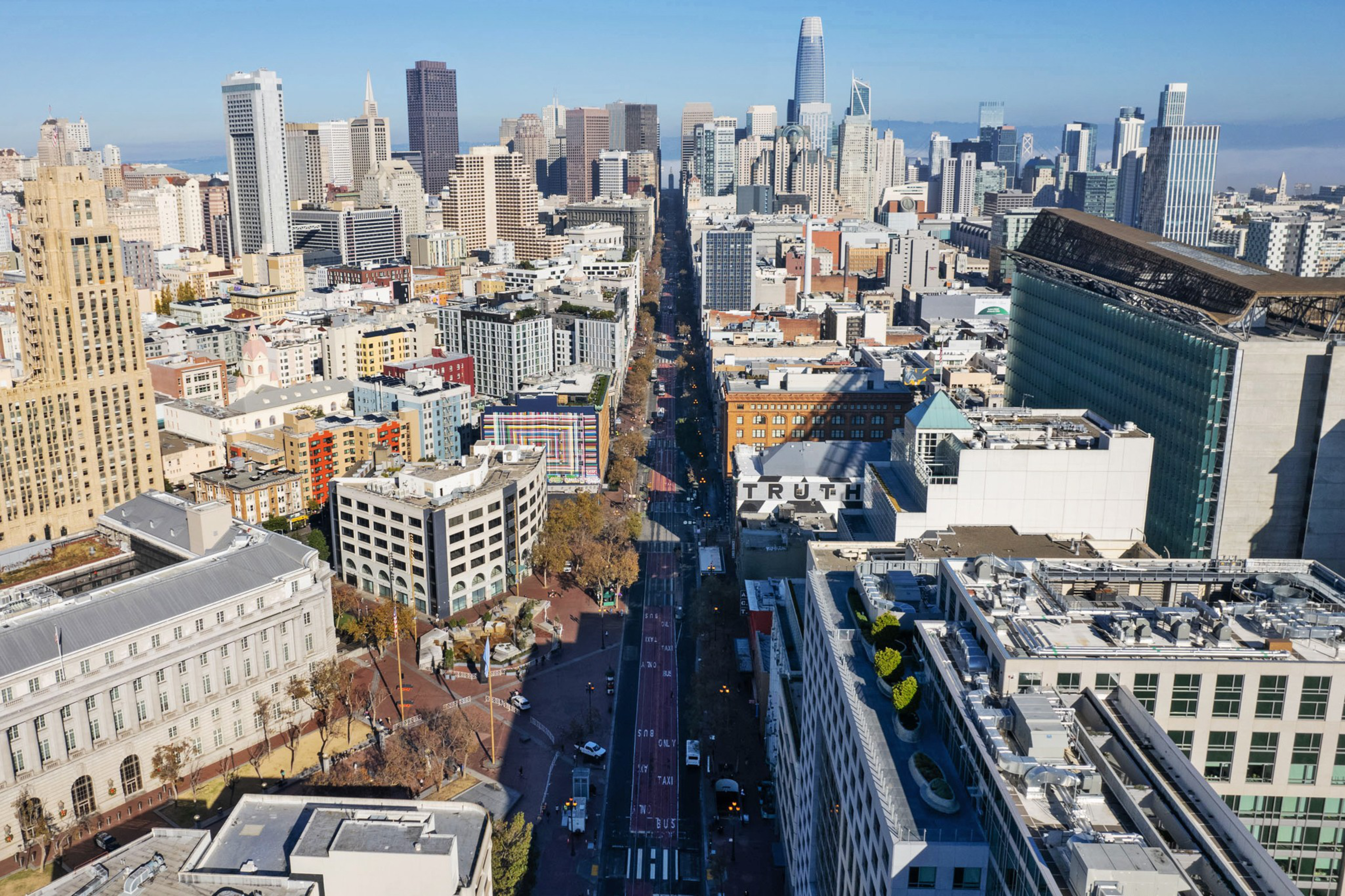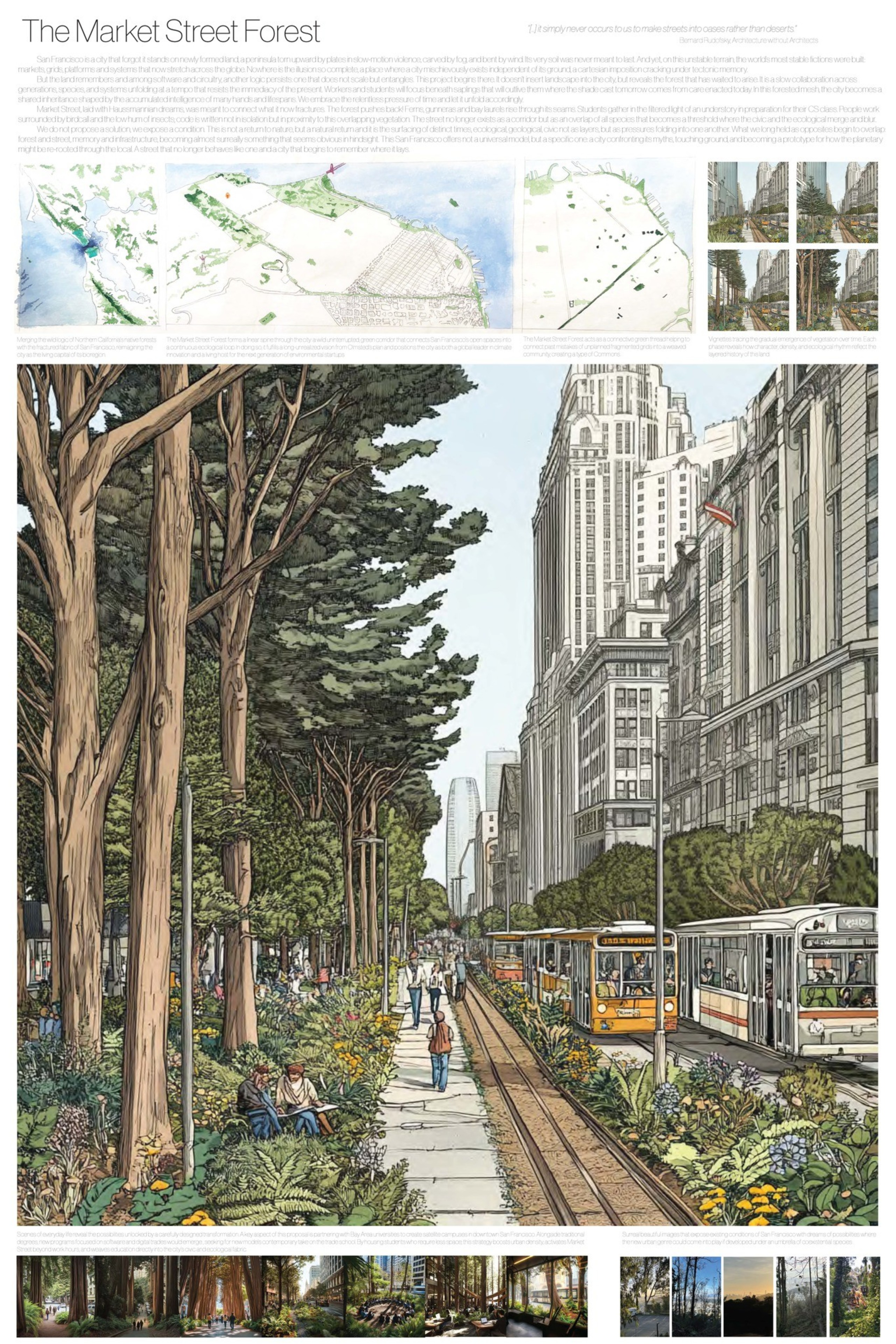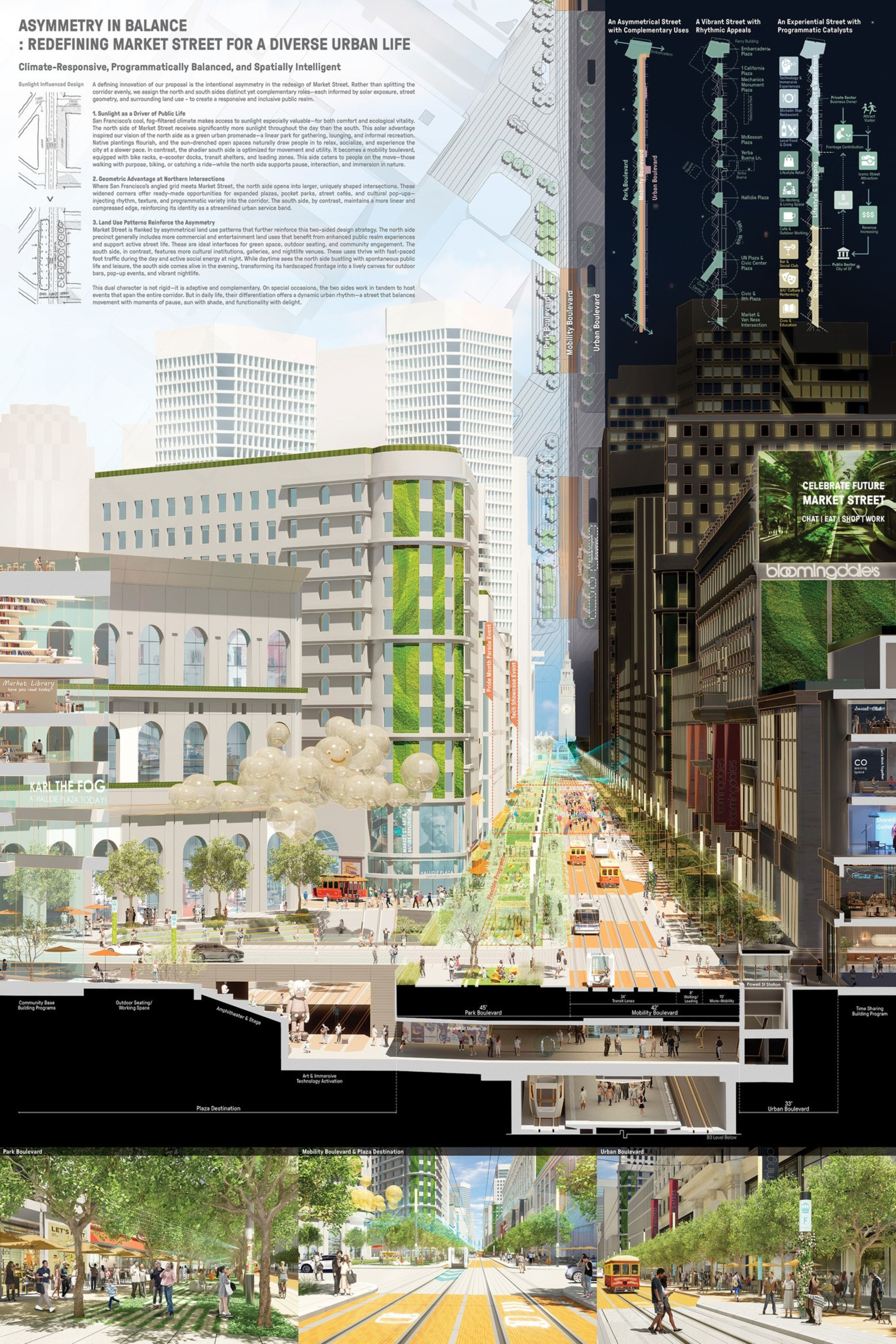On a sunny day in April, Mayor Daniel Lurie stood in the middle of San Francisco’s most famous street. In the background, the red-painted road was mostly devoid of traffic.
“We have to reimagine Market Street,” he said in a direct video address (opens in new tab)that has become his mayoral trademark. “This is a world-class boulevard, and we need world-class ideas.”
Lurie’s plea kicked off a competition sponsored by the Urban Land Institute and Civic Joy Fund, a nonprofit he cofounded prior to his election. The open call, which promised a $100,000 cash prize, solicited proposals to redesign the two-mile stretch of Market Street from the Embarcadero to the Castro.
The thoroughfare has been sapped of much of its energy, a victim of the pandemic’s impact on office work and a largely scuttled plan to improve pedestrian and transit infrastructure after banning private vehicles.
Therefore, Market Street has reached a point at which leaders must think beyond simple fixes, according to Manny Yekutiel, a former SFMTA commissioner who heads the Civic Joy Fund.

“No one wants to hear that we’re stuck with the world we have,” Yekutiel said. “We’re trying to deal in the art of what is possible. Even if none of these ideas are going to happen, there are a lot of tidbits that the city can still run with that they hadn’t thought of before.”
The Market Street Reimagined contest received around 170 submissions from residents of nine countries. A panel of 10 jurors — which included former Apple designer Jony Ive, celebrity architect Norman Foster, Lurie’s wife Becca Prowda, former Chronicle architecture critic John King, and other design experts — chose five winners after a streetcar tour of Market Street and a nine-hour deliberation session this month.
The honorees took the prompt of rethinking Market Street in widely ranging directions, so much so that the jurors ended up choosing five winners, who split the prize.
Winning the contest doesn’t mean any of the proposals will be commissioned, said Natalie Sandoval, executive director at ULI.
“This was meant to spur conversations,” she said. “We know there’s no silver bullet to fixing downtown. It’s about adding to the city’s toolkit as it moves forward with its own revitalization plans.”
Here’s a look at the five ideas that impressed the jurors most.
Let nature take over
In 2023, the Financial Times got flak for publishing a piece on San Francisco’s so-called doom loop (opens in new tab), illustrated with landmarks in ruins and reclaimed by nature. But in the case of this winning entry, the jurors appreciated the concept of transforming underutilized pavement with “dense tree planning” and controlled “greenery at scale.”
The design dubbed “The Market Street Forest” was submitted by an architecture professor at City College of San Francisco, who wrote that his goal was not to insert landscaping but to allow greenery to rise naturally. Details are scant, but the drawings depict an idyllic scene of people sitting beneath redwood trees next to ferns growing beside a Muni track.
Waiting for overgrown weeds to gradually take over isn’t exactly an attractive or feasible proposition, so the jurors suggest that “investment in big trees on day one” would be critical to success if this plan were ever to be pursued.

Chasing the sun
A San Francisco landscape design studio submitted a concept titled “Asymmetry in Balance,” which suggests that Market Street should be sliced down the middle and the sides separated according to use.
The team proposed that the north part of the strip, which gets more sunlight throughout the day, be utilized as a “green urban promenade” for gathering and lounging. Larger intersections in this half can be widened to create expanded plazas, pocket parks, and street cafes.
Meanwhile, the south side of Market Street can lean into its relative shade and current tenant mix of nightlife and cultural institutions by “optimizing for transit,” with more scooter and bike racks.

Install seating for 10,000
Officials at the Recreation and Parks Department were shocked when a resident left the city $3.6 million to build park benches. But those plans pale in comparison to a proposal that would break the Guinness world record for the world’s longest bench (opens in new tab).
Proposed by a team at Sitelab urban studio in San Francisco, a 4-mile bench would span the sidewalks on both sides of Market Street, potentially seating up to 10,000 people at a time. Sitelab wrote that the bench would be “an undeniable gesture of inclusion” and could be assembled quickly from standardized pieces.
The team said the idea was inspired by the fact that San Francisco has been removing seating from the public realm to discourage loitering and save costs on maintenance. By creating a critical mass, the team argued, the city can flip the issue and make the strip inviting again.

Light up the street
While some of the proposals would take gargantuan effort, jurors chose one called “Flying Colors” because it could be executed relatively quickly. San Francisco architecture firm Bionic proposed illuminating the entire Market Street strip by installing steel pole armatures adorned with LED mesh banners that would project strobing light, art, and civic messaging.
The jurors said they liked this plan because it would light the area at night and “connect the dots” for all activities and events happening along or adjacent to Market Street. The designers who submitted the concept criticized previous efforts to revitalize the strip as “slow” and “disconnected.”

Create four ecological zones
A plan called “Beating Heart” embraces the mosaic of neighborhoods that make up downtown by creating four distinct zones along Market Street, akin to the chambers of a heart, each with a different focus.
The four zones are dedicated to innovation and collaboration, leisure and well-being, arts and discovery, and civic and culture. Each area would get a light facelift, primarily through the introduction of native plants, meant to accentuate unique aspects and encourage people to hang out.
The plan was a collaboration between four design firms and was lauded by the jurors as a “workable strategy” that integrates the street’s existing transit and ecology.

Receiving honorable mentions in the contest were proposals for a gondola system, a lazy river, and a rainbow pedestrian bridge over Market Street.
Clarification: A previous version of the story connected commentary about one of the proposals to a description of one of the winning submissions.